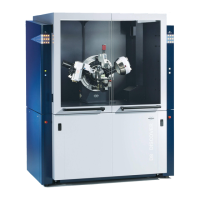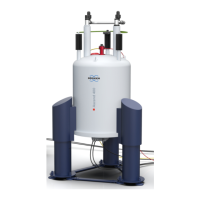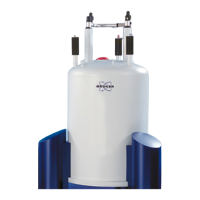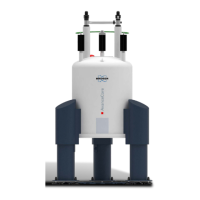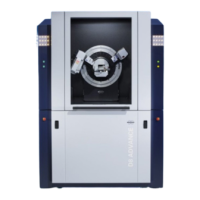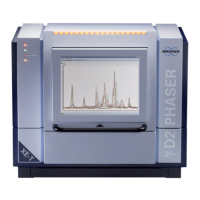Floor Plan
80 / 120 H157654_9_011
9.2 Dimensions and Mass of Equipment
The floor of the NMR laboratory must be sufficiently strong to support the magnet, the spec-
trometer, and other ancillary equipment. The following tables provide the dimensions and
weights of equipment, and the footprint and weight of magnets (filled with cryogens and in-
cluding stand). The assembly of the magnet system, the magnet energization and refills with
liquid helium require additional ceiling height.
Component Length (m) Width (m) Height (m) Weight (kg)
AVANCE NEO
OneBay
0.69 0.83 1.30 230
AVANCE NEO
OneBay with Highten-
ing
0.69 0.83 1.58 260
AVANCE NEO
TwoBay
1.31 0.83 1.30 340
AVANCE NEO
NanoBay
0.45 0.88 0.71 130
Table / Workstation 1.20 1.00 0.75 68
MicroImaging Cabinet 0.69 0.83 1.55 205 / 150
BCU-I 0.50 0.55 0.48 46
BCU-II 0.55 0.59 0.74 74
Prodigy Unit 0.60 0.40 0.46 68
For the CryoProbe option refer to CryoProbe and Other Accessories [}91]
Table9.1: Dimensions and Weights of NMR Equipment
9.3 Floor Load
The floor must be sufficiently strong to support the mass of the equipment, plus the weight of
any installation devices, e.g. hoists etc. The floor must also be as rigid as possible to reduce
the effects of vibration.
The overall floor load may be calculated from the total magnet weight distributed over the
overall footprint of the magnet.
The magnet is supported by a total of 9 small pads (3 pads per post). The maximum point
load may be calculated by the total weight of the magnet distributed over the total contact
area of the 9 points. Each pad is circular and has a diameter of 80 mm.
